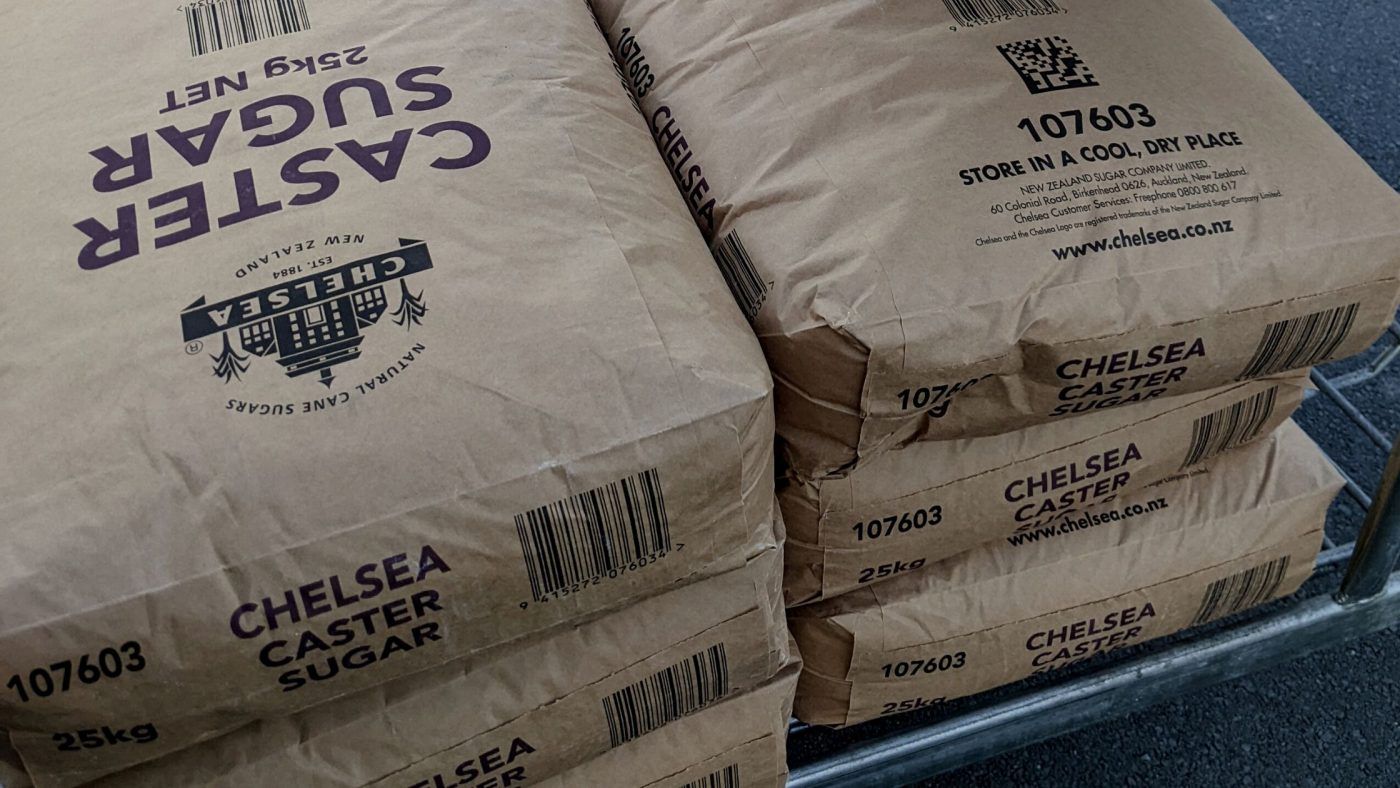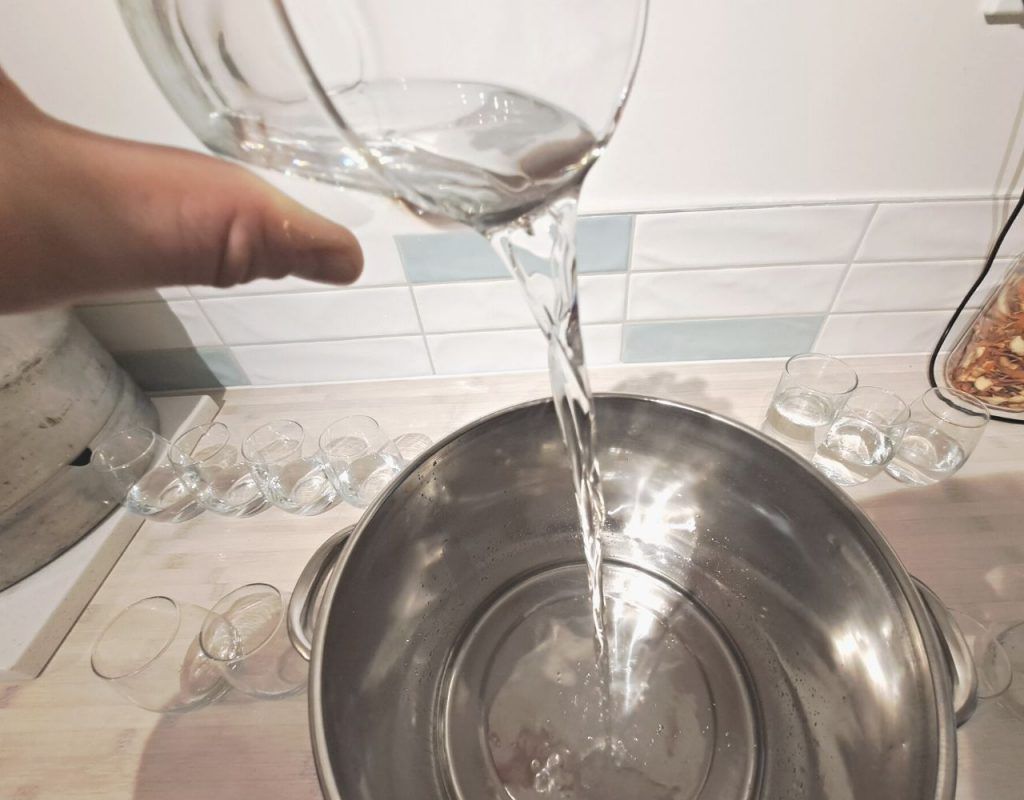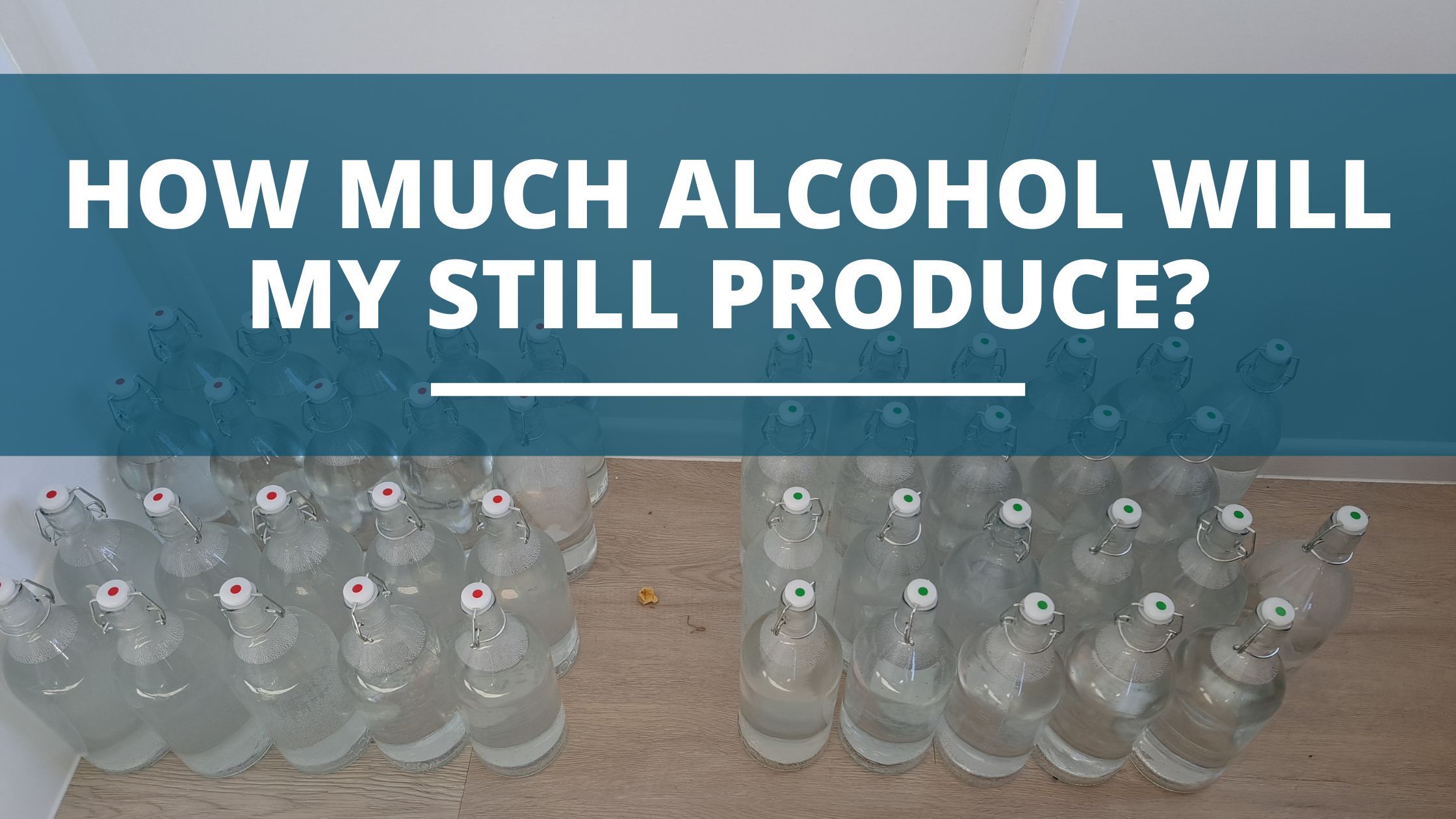Distilling
How Much Alcohol Will My Still Produce?(Explained!)
Knowing the potential yield of your still can help you plan your distilling day more effectively. Generally, you can expect to obtain 20% alcohol of your still’s capacity. This is just a rough estimate and can vary based on several factors, like wash, fermentation, and distillation efficiency.
In this post, I’ll discuss aspects that influence alcohol yield so you can be armed on brew day.
Table of Contents
How Much Alcohol Will My Still Make: A Rule Of Thumb
You can expect to get about 20% of alcohol from your still. If you have a wash that is 10% alcohol, you can obtain roughly 8L (2 gallons) of 40% ABV alcohol from a 37L (10-gallon) run. This depends on a bunch of factors, like your mash efficiency and starting gravity, your fermentation efficiency, your distilling efficiency and your wastage.
Let’s explain!

How Much Alcohol Will A Sugar Wash Yield?
Sugar washes are ideal because the complex carbohydrate is readily available for the yeast to consume and convert to alcohol. To give you an idea of the alcohol yield from a sugar wash, here’s a table showcasing values for different wash sizes.
| Wash Size (kg) | Alcohol Yield (liters) |
| 1 | 0.61 |
| 5 | 3.1 |
| 10 | 6.16 |
| 25 | 15.3 |
| 100 | 61.2 |

4 Factors That Affect Alcohol Yield (From Start To Finish)
1. Wash efficiency
A well-prepared wash makes it easier for yeast to convert sugar into alcohol, resulting in higher alcohol yields. This entails:
- Nourishing your yeast: Yeast needs nutrients to survive, multiply and see the fermentation through. Grains rich in nutrients provide a suitable environment for yeast growth. Alternatively, you’d have to use yeast nutrients to supplement the wash.
- Balancing the pH levels: The optimal pH range for yeast activity is between 4 and 6, with a slightly acidic to neutral environment.
- Preventing contamination: Unwanted microorganisms can reduce yield or spoil the wash altogether. Sanitizing materials that come in contact with the wash is one way of keeping contaminants at bay.
2. Fermentation efficiency
- Yeast strain attenuation: Different yeast strains have varying abilities to ferment sugar into alcohol. Those specifically designed for distilling can maximize alcohol production.
- Temperature: Maintaining ideal temperatures for your chosen yeast allows it to thrive and efficiently convert sugar to alcohol.
- Oxygenation: Aerating the wash at the beginning of fermentation promotes yeast reproduction, but oxygen exposure during fermentation can result in off-flavors.
3. Distillation efficiency
Having a still with good heat transfer and vapor management capabilities can make a big difference. It helps to separate the alcohol from impurities more effectively, giving you a cleaner and higher yield of alcohol.
4. Making cuts
If you’re using a pot still, you’ll experience a lower alcohol yield compared to a reflux still. Pot stills aren’t as efficient at removing unwanted compounds, which requires you to make more cuts.

Understanding wash/mash efficiency
Sugar Wash Efficiency
Sugar washes are known for their high alcohol production rate. It’s made of simple carbohydrates and the yeast can easily break down the sugar molecules into ethanol and carbon dioxide. The higher the concentration of fermentable sugars, the more potential there is for alcohol production.
Mashing Grains Efficiency
Grains like barley and rye contain starches that need to be broken down into sugars before fermentation. By mashing the grains, you are able to activate enzymes (either naturally occurring or added) that break down the starches into fermentable sugars. This ensures efficient sugar extraction and increases alcohol yield.
Fruit Wash Efficiency
Fruits with higher sugar content encourage yeast to convert any starches to fermentable sugars. Some fruits may require additional processing, such as pulping, crushing, and adding pectic enzymes to help release more sugars.
Understanding Fermentation Efficiency
Yeast strain attenuation
Different strains have varying attenuation characteristics, which play a big role in alcohol production.
- Bread/Baker’s Yeast: These commonly have low attenuation. They have low alcohol tolerance and consume a limited amount of fermentable sugars. When using baker’s yeast, you can expect 5-8% alcohol.
- Yeast for Spirits: Yeast strains specifically designed for distilling have high attenuation and maximize alcohol production. They can consume a wide range of sugars and can withstand harsh fermentation conditions. You can yield 15-20% of alcohol when using these strains.
Temperature
Yeast cells thrive within specific temperature ranges. Higher temperatures increase yeast activity and lead to faster sugar consumption. But, excessively high temperatures stress the yeast and produce off-flavors or halt fermentation altogether.
The reverse is also true. Lower temperatures prolong fermentation time which can result in cleaner flavors and aromas. But extremely low temperatures can stall fermentation, leading to incomplete sugar conversion and lower alcohol yields.
Oxygenation
Yeast requires oxygen at the beginning of fermentation for growth and reproduction, which helps kickstart alcohol production. Excessive exposure to oxygen can lead to both reduced alcohol production and undesirable flavors. When oxygen is present during the later stages of fermentation, yeast shifts from anaerobic to aerobic metabolism, consuming some of the available sugars for energy instead of converting them into alcohol.
Also, oxygenation can promote the production of acetic acid, resulting in the formation of unwanted off-flavors. Acetic acid imparts a vinegary or sour taste to the final product, which can affect the quality of your final product.

Distillation efficiency
Wastage (alcohol left over in the boiler)
As much as we aim for maximum distillation, achieving 100% alcohol is a challenge. This is because some alcohol molecules can be trapped with the impurities in the wash, resulting in leftover alcohol in the boiler.
Also, because compounds have different boiling points, if the distillation temperature isn’t high enough, some alcohol will not evaporate but will remain in the boiler.
Losses due to multiple runs (compounding of wastage)
Each time you run the wash, you will find some alcohol gets left in the boiler.
Wastage making cuts
Making cuts is a necessary part of distilling–removes unwanted componds–but it also results in wastage.
Losses from pot still
Making cuts with a pot still can result in about 10-20% alcohol loss. Because a pot still is inefficient at removing unwanted compounds, it requires you to make cuts in four main fractions: foreshots, heads, hearts, and tails. The foreshots, heads, and tails contain methanol and fusel oils, so they’re often discarded.
Losses from reflux still
A reflux still has precise separation of compounds. This column allows for multiple distillations within the still, resulting in a cleaner spirit. Similar to the pot still, the foreshots are discarded but because it can effectively purify the distillate, the loss can be anything between 5-10%.
Recommendations To Maximize Efficiency
- Create a high-quality wash
- Choose a good quality yeast
- Control fermentation temperature
- Distill slowly
1. Create a high-quality wash
Ensure your wash is packed with nutrients and starches to keep yeast active. Also, try to balance the pH levels by adding an acid like citric acid to promote yeast health. We strongly suggest you aerate the wash right at the beginning of fermentation and minimize oxygen exposure by maintaining a clean environment and using airtight fermenters or airlocks.
2. Choose a good quality yeast strain
Look for a strain with high attenuation because it can convert a large amount of sugar into alcohol, leading to a higher alcohol yield.
Checkout our yeast guides, such as:
3. Control fermentation temperature
Invest in a temperature controller like the STC-1000 to maintain precise control over fermentation conditions. Controlling the temperature means you’re less likely to experience a stalled fermentation or stressed yeast.
4. Distill slowly
When performing a spirit run, take it nice and slow. This allows you to make precise cuts to obtain more of the good stuff.
Final Thoughts
Estimating the exact amount of alcohol your still will produce can be a challenging task because of all the factors that come into play. The general rule is that you” yield 20% alcohol of your still’s capacity. But there are ways to harness the potential of your still. You can start with a high-quality wash by nourishing your yeast with nutrients and maintaining optimal pH levels and temperature. When your wash hits the still, pay attention to how fast your still runs because it can determine the level of control you have over making cuts, which can compromise your alcohol yield.








